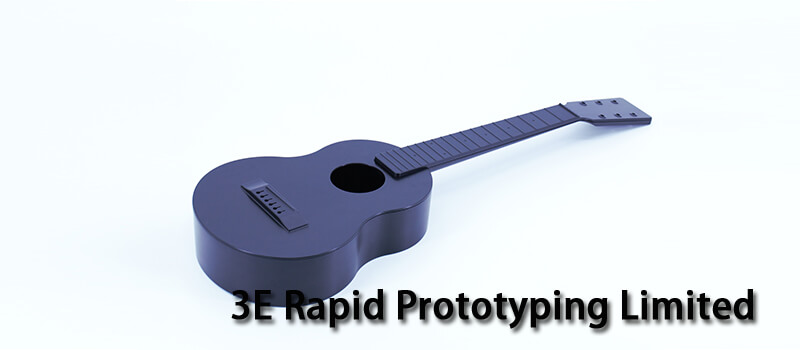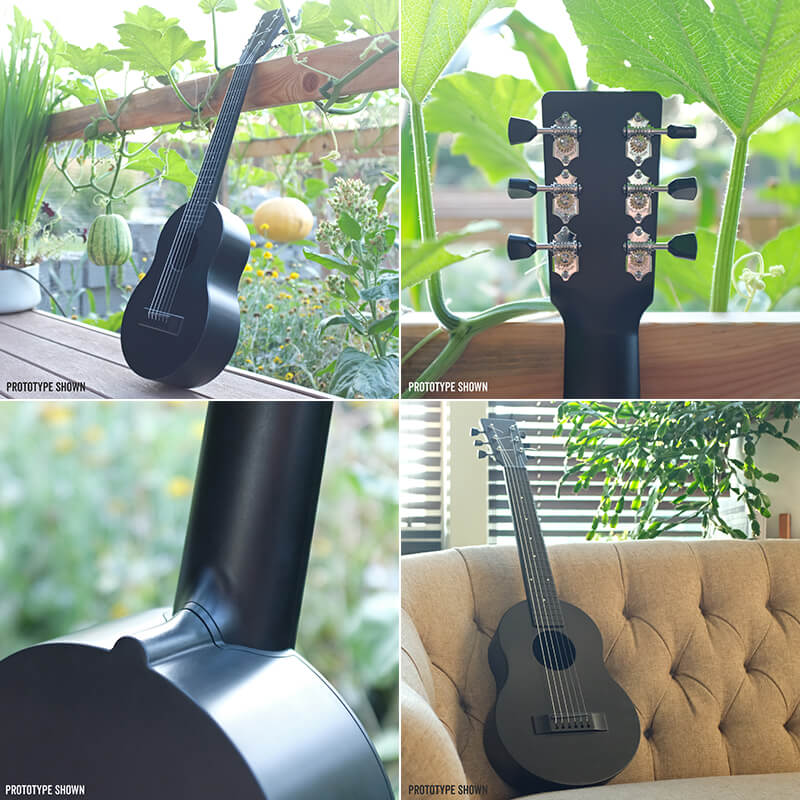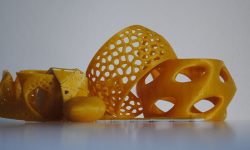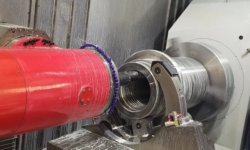The music industry is a massive revenue-generating behemoth, with the sales of musical instruments alone amounting to 4.5 billion dollars annually. That cost is justified because, as any musician will know, producing precise electric and acoustic instruments requires a lot of know-how and precision.
And precision is where CNC machining comes in. The manufacturing process, used to cut away material from a solid block, can be used to produce premium guitars, violins and much more — for both the major mass-market producers and smaller businesses.
This article shows what CNC brings to the musical table, examining use cases from companies and researchers.
High-Quality Instrument Reproduction
When creating musical instruments, CNC machining has many advantages over other forms of manufacturing. It is fast and dimensionally accurate (and therefore suitable for mass production), and it can be used to create a range of shapes, including those of classic, high-quality instruments once made using manual techniques.
Recreation of a 1704 Stradivarius violin
One case of CNC imitating traditional craftsmanship was a 2012 project undertaken by a radiologist and two violin-makers, who set out to recreate a 1704 Stradivarius violin — one of the most expensive instruments on the planet. With the use of a CT scanner and CNC machine, they were able to remake the form and precise structure of the iconic instrument.
By applying a CT scanner to an original Stradivarius, the researchers gathered 1,000 CT images, which were turned into a digital 3D model of the violin. Then, using a custom-made CNC machine, they carved the ornate neck and body of the instrument from various different woods. The components were then assembled and varnished.
The researchers were able to create a faithful replica of the centuries-old instrument, copying its internal structure to produce a faithful sound. The project suggested that CNC machining could give violinists around the world a cheaper alternative to classic instruments.
CNC Machining is Ease-of-Use For Smaller Shops & Mass Producers Alike
The ease-of-use that CNC machining provides has allowed many instrument producers to create their own goods with minimal labor while economizing on time and resources. For example, smaller, cost-efficient CNC machines are now found in the workshops of hobbyists and professional guitar builders alike.
Guitar Manufacturers
Taylor Guitars, one of the larger companies on the spectrum, is an expert in CNC machining, and uses a Haas Vertical Machining Center to carve the wood for its guitars. As a result, the company has impressive cycle times: it can make eight necks in about 35 minutes. Guitar giant Fender, perhaps the biggest name in the business, also uses a VMC for production.
Many smaller producers follow a similar route. Thorn Guitars, an independent California shop, CNC machines its products in much the same fashion as Fender, providing high-end, limited-run guitars as opposed to mass-manufactured ones. Some shops even produce custom-made CNC guitar parts for those more interested in putting together their own axe. Stores like CNC Fretboards, for example, sell pre-machined fretboards for guitar manufacturers and hobbyists to buy on demand.
Piano Manufacturers
Piano makers are no strangers to CNC machining either. Compared to traditional manufacturing, Yamaha is able to create 20 times the number of pianos with the help of Datan CNC machining equipment. To a different effect, Schimmel Pianos uses CNC primarily for its accuracy, adding fine details at sizes amounting to a hundredth of a millimeter.
Mixed Approaches Can Save Time & Cost
Not all makers are privy to the largest, most expensive CNC machines, but that hasn’t stopped them from achieving results by mixing and matching manual production techniques with CNC technologies.
In guitar manufacturing, a CNC machine can serve a range of purposes depending on the maker’s needs, budget and required level of automation. Not all milling devices are capable of machining an entire guitar body — either due to size or capability restraints — but smaller devices can help engrave and carve designs or produce smaller components.
In fact, a maker may wish to employ traditional crafting techniques for the instrument body — the main wooden section of a guitar or violin, for example — while applying CNC machining techniques to smaller components such as fret slots and tuning knobs. Smaller and cheaper CNC machines can easily produce these components without detriment to the instrument’s sound quality.
The combination of old and new techniques is now commonplace in the world of violin restoration.
Several restorers in Italy, for example, mix manual gouging, preparation and scraping with CNC milling processes and 3D scanning. The mixed-method approach allows the experts to determine which parts of the violin are best suited to machining, and the violins are thus created with a restorer’s attention to detail and a CNC machine’s precision.
Experimental Materials for New Sounds
Another use of CNC machining for musical instruments involves experimenting with unorthodox manufacturing materials, including those that would not have been accessible, pliable or cuttable for traditional instrument makers.
While guitar bodies have traditionally been made of wood — the material is easy to manipulate and produces a rich tone and resonance — the power and material versatility of CNC machining has allowed manufacturers to think outside of the box, using plastic and metals instead.
Liquid Metal Guitars, for example, has established a reputation as a guitar-making outsider, producing machined aluminum guitars using — you guessed it — a Haas VMC. These unusual electric instruments don’t sound like traditional guitars, but instead provide a futuristic alternative to the classics. (Just like CNC machining itself.) The company, for its part, says its instruments produce an “insane” level of sustain.
Total Customization for Musicians
CNC machining is an excellent tool for production and reproduction of musical instruments, but it’s also highly useful for tweaking aspects of an existing instrument to a musician’s personal specifications.
Consider, for example, the frets on a guitar neck. These are the thin metal lines that divide one note from the next; the guitarist pushes down on the string just above the fret to play the corresponding note. Some guitarists like these frets to be protrusive so they can easily feel the difference between one note and the next. Others, however, prefer the frets to be more unobtrusive, so they can quickly slide their fingers up and down the fretboard with minimal resistance.
With a CNC machine, a guitar technician can precisely adjust a fretboard and individual frets, making sure each fret is raised to the same height and — crucially — to a height that suits the guitarist’s playing style. For this specific task, there is even a specialist guitar-oriented CNC machine called a Plek Machine.
Overall, there are many applications of CNC machining and milling technology that can be used for musical instruments. They can supplement traditional modes of production and in some cases replace them altogether. It also has the ability to recreate old forms and aid in realizing new ones. CNC machines will, therefore, continue to be a prominent part of musical instrument production for years to come.
CNC machining for music instruments with 3ERP
3ERP has worked with many customers and brands in the music industry, completing prototypes and low-volume production runs for a wide range of specialist components.
We specialize in a variety of CNC applications for many industries:
Request a quote today to get your project started.







